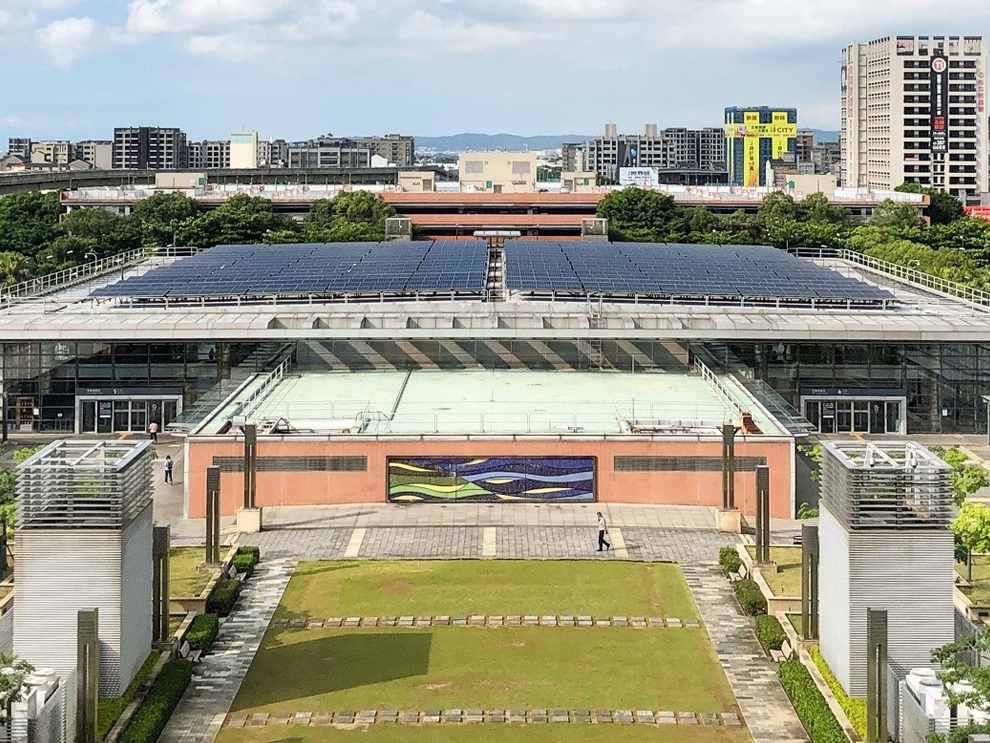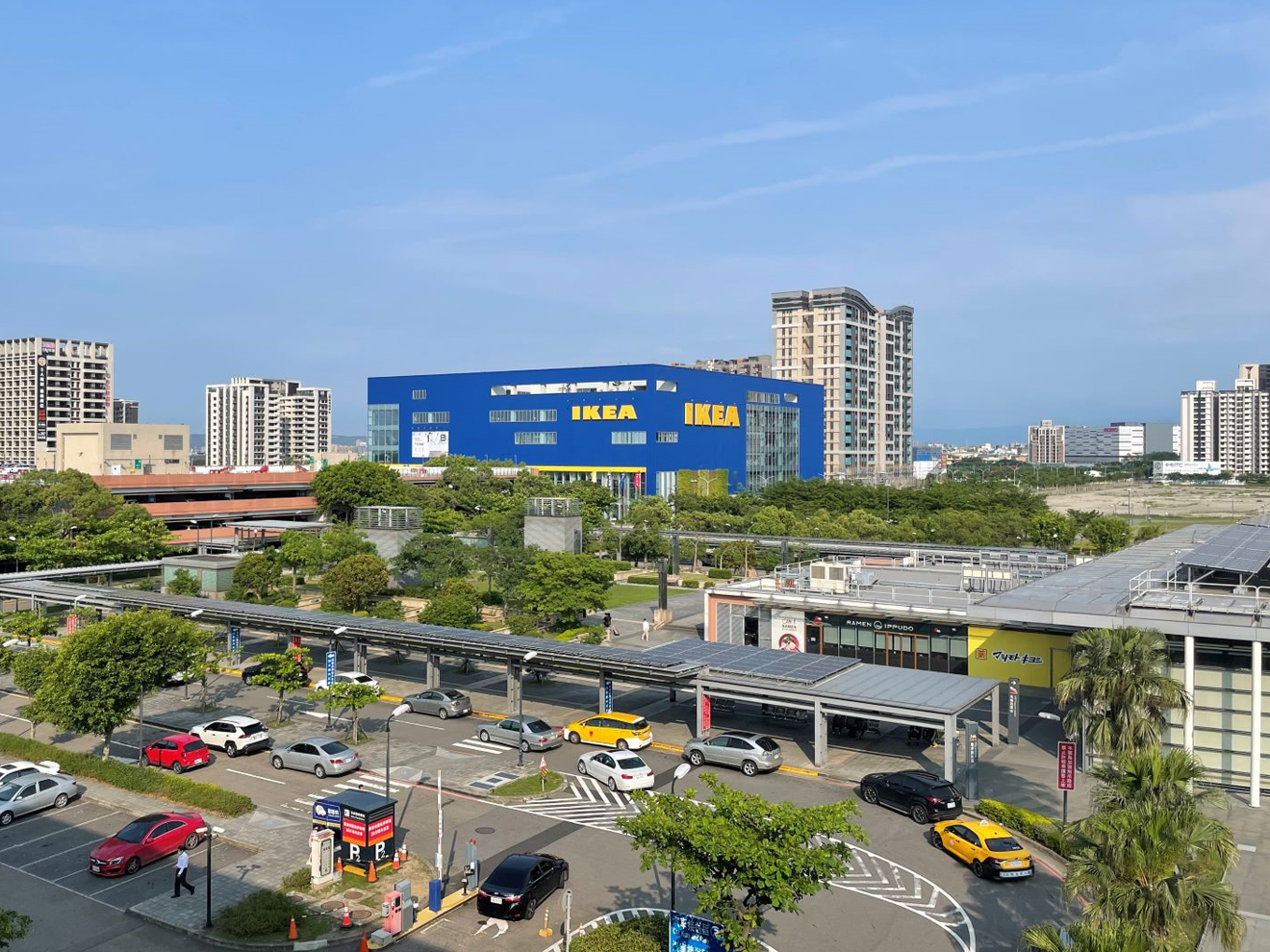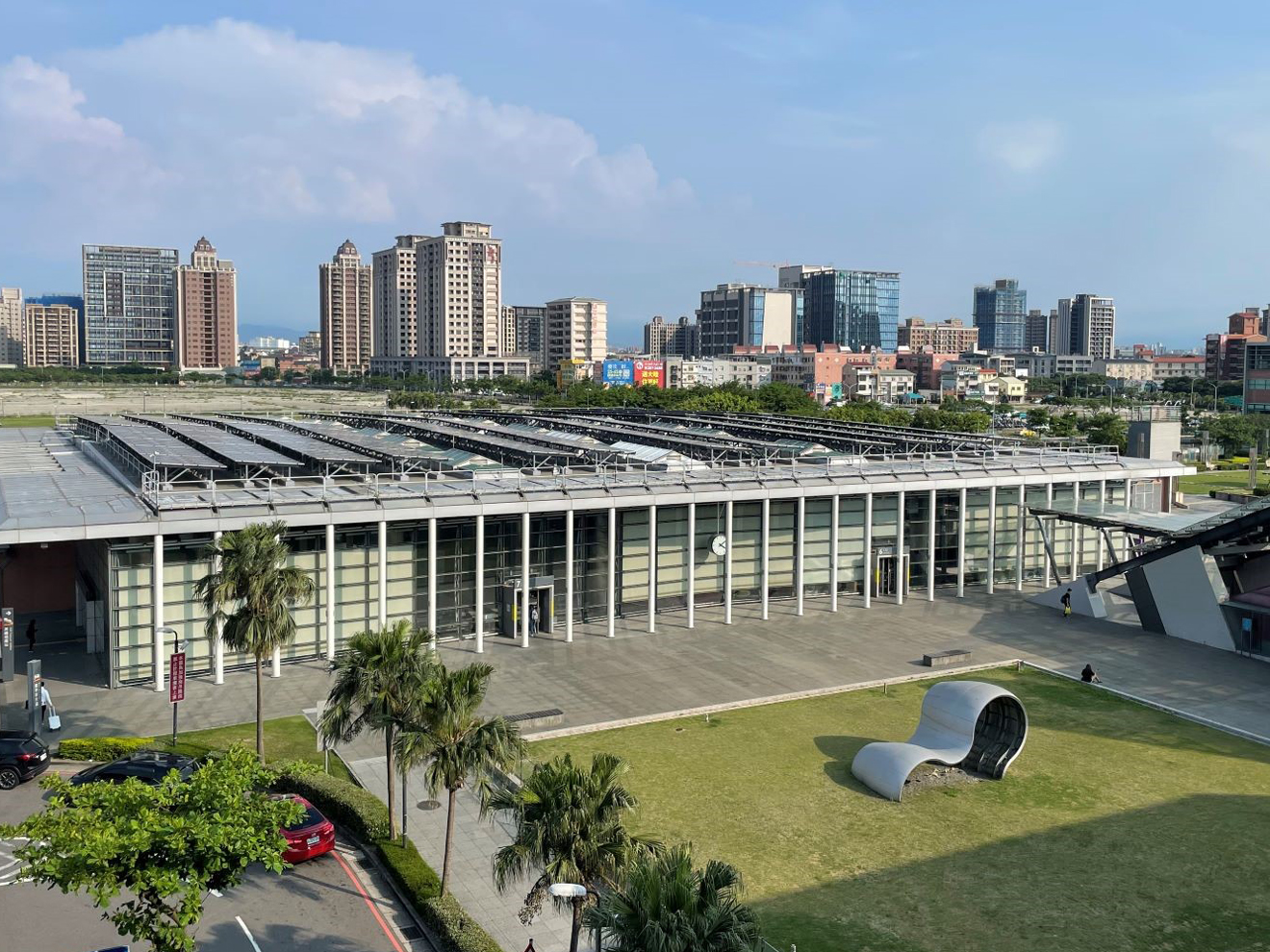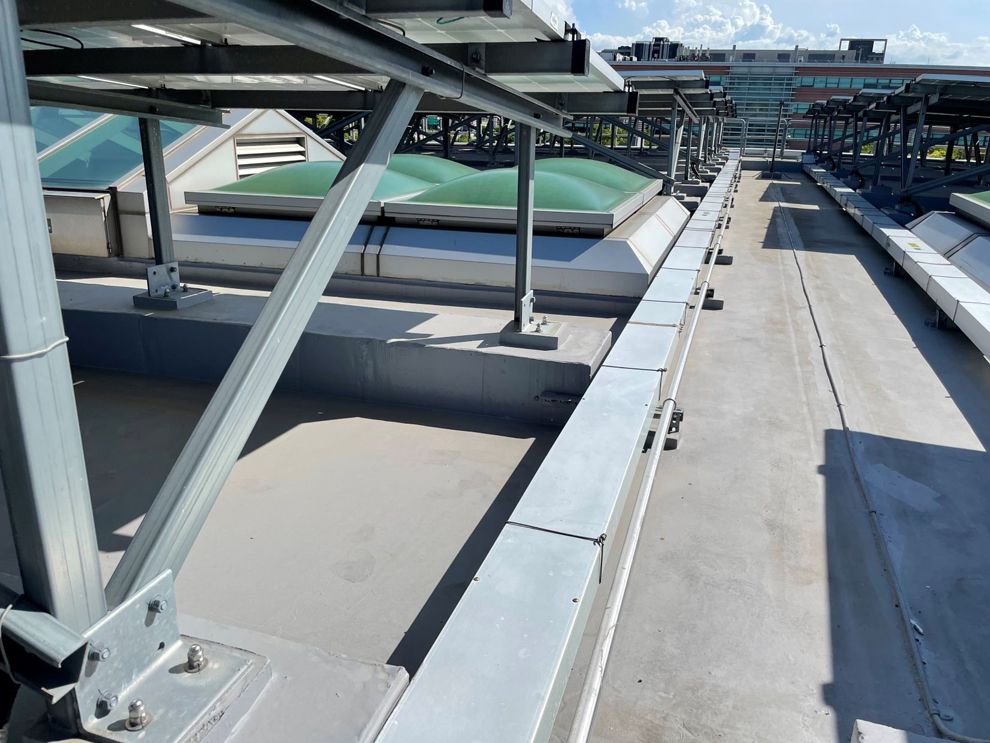Discover Reliable
發現信賴
CTCI Successfully Developed Green Transportation Station - Taoyuan HSR Station Rooftop Solar Photovoltaic System Project
— Chao Ching-Her, Deputy Chief Engineer of ECOVE, Group Resource Cycling Business
- Market Category: Power
- Owner: Taiwan High Speed Rail Corporation
- Department in charge: ECOVE Environment Corp., a subsidiary of CTCI Group
- Project Construction Period: January 2019 - June 2020
- Operating Period: June 2020 - June 2039
- Location:Taoyuan HSR Station
- Scope of work: Development, investment, engineering, procurement, supervision, construction, and 20-year maintenance and operation
- Installed Capacity: 499.84 kW
This project is one of the specific measures promoted by Taiwan High Speed Rail Corporation (hereinafter referred to as Taiwan High Speed Rail) in response to the government's energy transition policy to promote the development of low-carbon transportation. In 2019, Taiwan High Speed Rail continued its practice of leasing its own station roof to a contractor for installing solar photovoltaic system through a bidding process. Currently, this is the only project that involves setting up and operating the solar photovoltaic system on the station roof of Taiwan High Speed Rail through leasing. ECOVE, a subsidiary of CTCI Group, has successfully obtained the development, construction, and 20-year maintenance and operation of this project through a rigorous selection procedure. This project not only actively aligns with the government's goal of promoting sustainability and net zero, but also supports Taiwan High Speed Rail’s mission statement of realizing green transportation. Furthermore, the project has generated significant revenue for Taiwan High Speed Rail through the sale of electricity, creating a situation that benefits the government, Taiwan High Speed Rail, and ECOVE alike. In the future, with its exceptional performance and experiences, ECOVE is confident in securing the rights for developing solar photovoltaics in other places in collaboration with Taiwan High Speed Rail. Additionally, ECOVE will keep broadening the scope of cooperation in areas such as renewable energy, energy conservation, and energy storage, aiming to become the most reliable partner for clients.

Taoyuan HSR Station

The covered corridor of Taoyuan HSR Station
Why choose CTCI?
Steady Investment, Professional Integrity
ECOVE has long been collaborating with major public transportation companies in Taiwan, such as Taiwan High Speed Rail, Kaohsiung MRT, and Taipei MRT, and has dozens of experience in rooftop, ground-based and water-based solar photovoltaic projects, with the scope covering development, planning, investment, construction, and operation. Sticking to a steadfast investment strategy centering safety and reliability, combined with holding projects for a long time, ECOVE successfully earns the trust and recognition from our clients in a highly competitive market. Over the past decade, ECOVE has obtained development rights for various stations of Taiwan High Speed Rail, and has established itself as a reliable partner in promoting green transportation, making contributions to sustainable development.

Taoyuan HSR Station roof
Reliable Team
Outstanding Engineering Quality Highly Recognized by Clients
CTCI Group has long been collaborating with Taiwan High Speed Rail with its long-standing reputation for engineering quality, successfully forging partnerships in the field of solar power generation since 2013. Beginning with the Zuoying Base project, ECOVE has contracted solar photovoltaic projects for all maintenance bases of Taiwan High Speed Rail, all the way from south to north. The installation of solar panels has also been extended beyond rooftops to include ground-based and water-based types, establishing ECOVE as Taiwan High Speed Rail's key partner in promoting renewable energy. During the initial planning of this project, a comprehensive internal and external assessment was conducted. This assessment covered various issues such as roof load restrictions, structural reinforcement, building shading, construction safety, integration with the visual landscape, and non-interference with normal station operations. Throughout the construction phase, ECOVE prioritized safety of the roof operation team and passengers, striving for thoroughness to ensure successful completion of the facility with “the most reliable engineering quality” CTCI is renowned for. The facility started operation since May, 2020, projected to generate an annual power output of 630,000 kilowatt-hours, which is equivalent to the annual electricity consumption of 173 households. Additionally, it will reduce annual carbon dioxide emissions by approximately 333 metric tons, equivalent to the absorption capacity of 1.3 Taipei Da'an Forest Park. ECOVE has already installed a total capacity of 7.67 megawatts in existing cooperation projects with Taiwan High Speed Rail. It is projected that the power generation over the next 20 years will reach 170 million kilowatt-hours, resulting in a reduction of 85,000 metric tons of carbon dioxide emissions. This significant contribution will help mitigate global warming.
Project Highlights
Won the Top Solar Award
In this project, the installation of solar photovoltaic panels on the roof and the covered corridor of the HSR station not only generates green energy, but also significantly reduces the indoor temperature of the station, resulting in energy-saving and carbon-reducing benefits. Strict control measures were implemented during the development phase to ensure the station's normal operation and safety for high-altitude operations on the roof. Moreover, as for facility design, the integration with the overall landscape was prioritized, earning high recognition from Taiwan High Speed Rail. This project also won the “Top Solar Award for Excellent Solar Photovoltaic Systems”, the highest domestic honor in the solar photovoltaic sector, for the team’s outstanding performance.
Largest Roof Scale of Transportation Stations in Taiwan
Installed on the roofs of the station hall and the covered corridor that is used by passengers to enter and exit the station square, the scale of this solar photovoltaic power generation system is the largest among the operating transportation stations that have roof-based solar photovoltaic facility in Taiwan. Due to height restrictions imposed by the aviation authority, the height of Taoyuan HSR Station is limited to 23 meters. As a result, the planning of the solar photovoltaic system is based on the horizontal line of the Taoyuan HSR Station. The design of the photovoltaic system was seamlessly integrated into the building, preserving the existing skyline view and creating a harmonious environment. Furthermore, the additional photovoltaic equipment was integrated with the original landscape gardening, achieving a cohesive and visually appealing landscape. The Taoyuan HSR Station serves as an extension hub for the Taoyuan International Airport, offering convenient transportation services that connect major cities and attractions across Taiwan with Taoyuan Airport MRT for both domestic and international travelers. As passengers travel along this bustling transportation artery, they have the opportunity to admire the picturesque landscape and watch the neatly arranged solar panels silently generating clean energy, creating a harmonious blend of movement and tranquility, with airplanes flying across the sky in the distance.
Innovative Engineering Technologies
Strengthen Rebar to Enhance Structural Safety
The roof of the Taoyuan HSR Station lobby consists of a steel deck plate, a waterproof insulation layer, and a concrete layer, along with glass skylights. In order to meet the station's environmental requirements and ensure structural safety, a gravity-based foundation system was adopted to install the photovoltaic system above the lobby. The gravity-based structure supports the foundation base of the support frame with high-standard concrete and a concrete friction coefficient of 0.3μ, providing resistance against tension, overturning, and sliding. Additionally, to mitigate the impact of seismic lateral forces on structural safety, M10 stainless steel screws (35cm in length, with a construction depth of 21cm) were embedded, and HILTI HIT-RE500 V3 epoxy resin anchors (rebar adhesive) were injected into the gravity-based foundation to enhance the strength of rebar installation, thereby significantly improving structural safety. To prevent water leakage in the station hall caused by errors in rebar construction, a specific plan was developed to conduct structural analysis before construction using the PS 1000 X-Scan, an international professional scanner that is efficient and multifunctional in scanning concrete. It can detect embedded objects such as rebar, metal pipes, plastic pipes, prestressed steel bars, wires, and fiberglass cables on large areas of concrete, including the steel bearing plate valley, with a detection depth of up to 30cm. The detection results can be immediately displayed on the scanner or transmitted to an analyzer for further evaluation. This non-destructive structural testing technology allows the accurate implantation of screw anchors in the steel bearing plate valley, and the injection of seismic-resistant HIT-RE500 V3 epoxy resin anchors (rebar adhesive) in water-filled cavities. By using this method, the existing steel bearing plate of the HSR station roof is protected from damage, thus preventing water leakage. Furthermore, to ensure the quality of rebar construction, trial rebar installation was conducted before construction, and a third-party notary was hired to perform on-site pull-out tests after the completion of rebar construction to ensure that the tension meets the structural verification standards.

Solar Photovoltaic Hybrid Construction Method (Gravity Placement and Rebar Planting)

The PS 1000 X-Scan concrete scanner is used to scan and verify the presence of embedded objects beneath the concrete, specifically in the steel bearing plate valleys.
Management Team's Message
The high speed rail is a low-carbon and environmentally friendly mode of mass transportation. By leasing the roof of the HSR station for installing solar photovoltaic system, Taiwan High Speed Rail aims to establish a zero-carbon transportation value chain to assist the government fulfilling the goal of green energy development and net zero. With the unwavering commitment to quality and safety, the ECOVE team has successfully started commercial operation and power generation of the system on time with exceptional quality. The team will continue upholding the “most reliable” brand spirit to provide the most professional and timely maintenance services for this project, aiming to achieve stable, secure, and highly efficient power generation.
